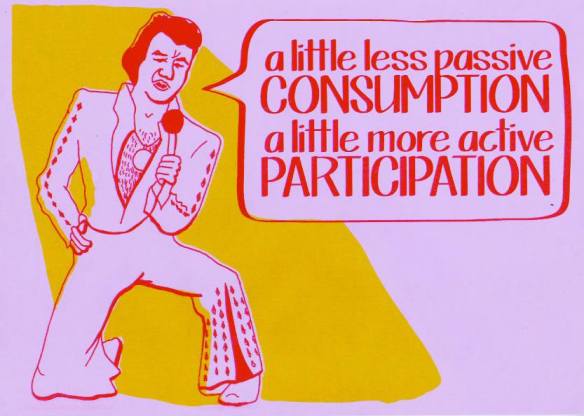Task 4: A discussion of the relationship between the designer and social movements.

Picture taken of The Common House wall during our visit.
There is no such thing as a single-issue struggle because we do not live single-issue lives. Our struggles are particular, but we are not alone.
– Audre Lorde
We Design Activism students got the chance to visit The Common House, a collectively managed space for radical groups, projects and community events located in East End London during our latest session. What it’s called tells the story of why it’s needed to happen. Due to the expensive rent in London, renting the space together has enabled The Common House organisers to offer a common space for everyone who shares common problems to meet, talk, organize, make banner, props, watch movie, party, have fun and do everything in a collective way.

A print by Riso Print Club, The Common House.
The Common House is not just a space to be used or consumed, but is a collective attempt to organize and maintain infrastructure and resources for radical ideas and practices. A commons is different to private space (individually owned) and public space (state maintained). It is maintained by the people who use it. It has members, not consumers.
‘Collective’ is not a new concept in the social enterprise world. Through it we empower individuals voice, channel creativity and drive innovation. As Nina Felshin suggested in her book ‘But is it Art? The Spirit of Art as Activism’, the power of collective action is unmeasurable and complemented by the employment of media technology. It “successfully embodies and serves the work’s activist goals” and is “an important factor in the work’s impact.” Nina also agreed with philosopher Marshall McLuhan’s observation on collaborative methods over three decades ago “as new technologies come into play, people are less and less convinced of the importance of self-expression. Teamwork succeeds private effort.”
It doesn’t require much effort to point out the obvious purposes of adopting the concept of collective action and transfer it to a physical common space. Whatever the group activity is, either sharing ideas, organizing workshop or handling reproduction (managing radical archive, radical print collective, etc), it’s been employed by activists and artists to expand their collaborative way of working to an audience or community, to make sure information are being circulated, and most important of all, to create a culture that is central to social changes.
References:
Achwal, N (2011). The best ideas of 2011: The power of collective action. [Internet]. Available from: <http://nextbillion.net/the-best-ideas-of-2011-the-power-of-collective-action/> [Accessed 10/11/2015]
Felshin, N (1995). But is it Art? The Spirit of Art as Activism. USA: Bay Press, Inc.
